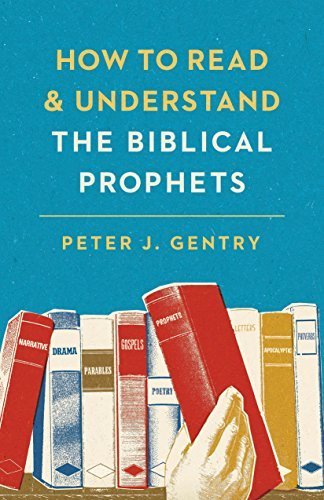What do you think?
Rate this book


158 pages, Kindle Edition
First published June 1, 2017
"Everything in the prophets is based upon the covenant made between God and Israel during the exodus from Egypt, especially the expression or form of the covenant as it is found in the book of Deuteronomy."And
"For the prophets, their perspectives on social justice, their promises and their threats, even their very sentences and words, are all based upon the book of Deuteronomy, an expansion and renewal of the covenant made at Sinai."
"The normal pattern of Hebrew literature is to consider topics in a recursive manner, which means that a topic is progressively repeated. Using the recursive approach, a Hebrew author begins a discourse on a particular topic, develops it from a particular perspective, and then concludes his conversation. Then he begins another conversation, taking up the same topic again from a different point of view. When these two conversations or discourses on the same topic are heard in succession, they are like the left and right speakers of a stereo system. This pattern in Hebrew literature functions on both macro and micro levels. Individual sentences are placed back to back like left and right speakers. Paragraphs and even larger sections of texts are treated the same way."
"For a hundred years or more, scholars have not asked, What were the Hebrews’ own principles and rules for telling stories? And how did the authors of that culture and time construct their works? The literary structure of each prophetic book as a whole is fundamental to interpretation."
The word pair becomes an idiom expressing a single thought that is both different and greater than the words considered independently.
A word pair, then, is a mini stereo sound bite in which two words, like the left and right speakers of the stereo, communicate an idea that is fuller and greater than either of the two words considered individually.
The word pair justice-righteousness is central to the discourse of Isaiah and occurs some eighteen times, always at critical or key points in the discourse.
Social justice is a term used by Isaiah and other prophets as a way of summarizing all the diverse instructions in the covenant. So here, the term social justice is defined by the detailed instructions in the covenant for treating other people in a genuinely human way.
"Apart from the prophetic word, imagine what the people of Jerusalem would have thought when the Babylonians came and conquered the city and razed it to the ground, exiling the citizens to Babylon. Imagine undertaking the journey on foot, in chains for weeks, perhaps months, and finally arriving in Babylon in a land far away from home. Imagine walking down a corridor of high walls, beautifully decorated, and arriving at the massive Ishtar Gate of the city of Babylon. Archaeologists have reconstructed this gate, and it is displayed in a museum in Berlin. Even today, simply viewing the reconstruction is an overwhelming experience. Were it not for the prophetic word, the people of Judah and Jerusalem would surely have concluded: “Now we know why the Babylonians conquered us. It is because the gods of Babylon are bigger and more powerful than Yahweh.” Such a conclusion, of course, would have been utterly wrong. They were conquered for only one reason: they had violated the covenant, and the covenant curses of Deuteronomy 28 had came upon them. God had promised that he would send enemies and kick them out of their land, and he had finally kept his word and done it. God brought the Assyrians and the Babylonians against his own people for violating the covenant. It was necessary, then, for the predictions of Isaiah, Jeremiah, and Ezekiel to be written down so that when those events occurred, the people of Israel would draw the right conclusions."
"A major type in the Bible, in both Old and New Testaments, is the exodus, when God delivered his people Israel from bondage and slavery in Egypt. Here an event in the past becomes a model or pattern to describe future deliverance and salvation for the people of God."
"In brief, typology is governed by four factors. The first is correspondence between events, people, places, etc., Second is escalation from type to antitype so that the later event, person, or thing that can be said to be the fulfillment of the type is much better and greater than that which foreshadows it. Third is biblical warrant. For something to be considered a type, there must be exegetical evidence in the original text that indicates that what the text is dealing with is intended to be a model or pattern for something to follow in history. The fourth factor is that the progression of the covenants throughout the narrative plot structure of the Bible both creates, controls, and develops the typological structures across the canon of Scripture."
"Apocalyptic is both a genre or kind of literature and a type of language that may be used in other genres that are not apocalyptic. Apocalyptic language uses complex and highly colored metaphors and symbols in order to describe one event in terms of another. In this way, an event can be described and, at the same time, the meaning of the event can be explained."